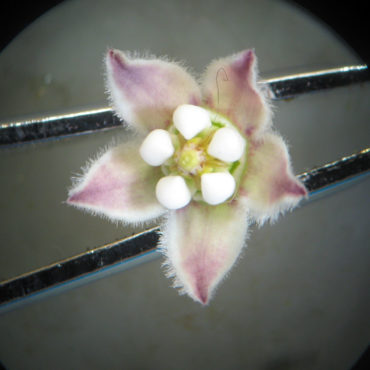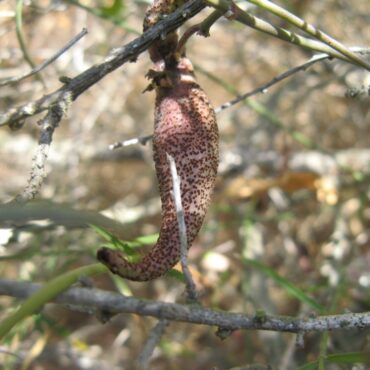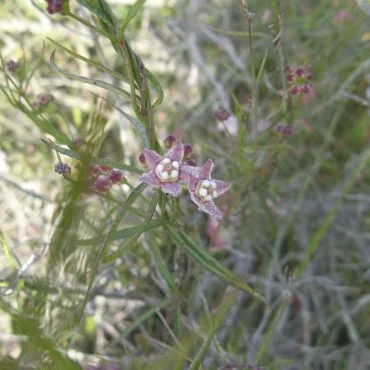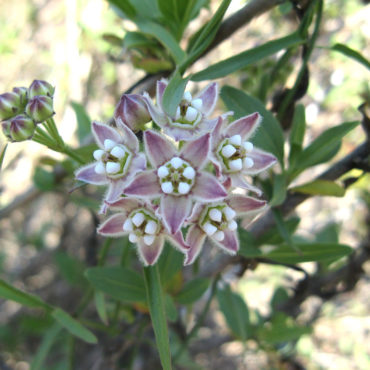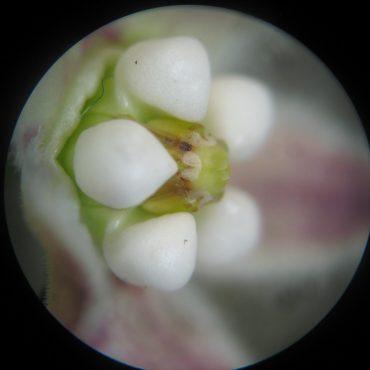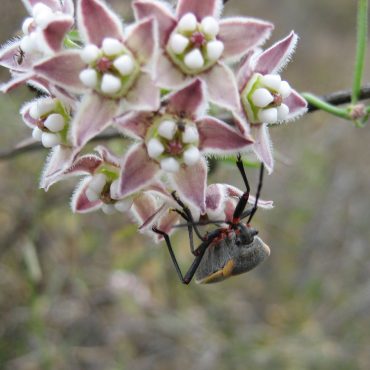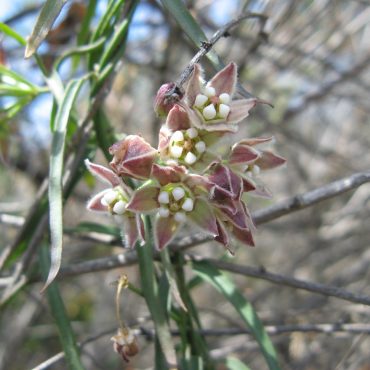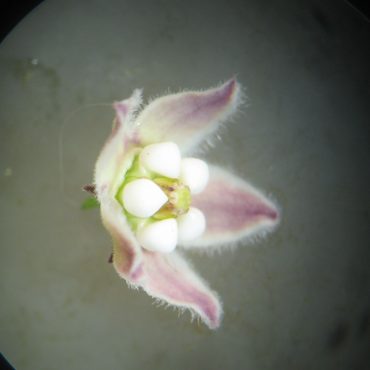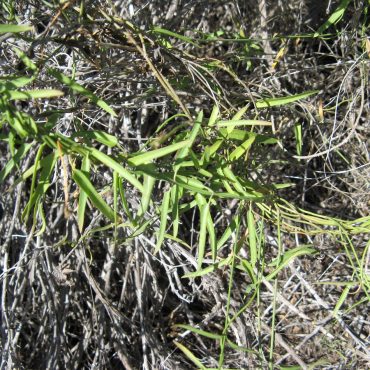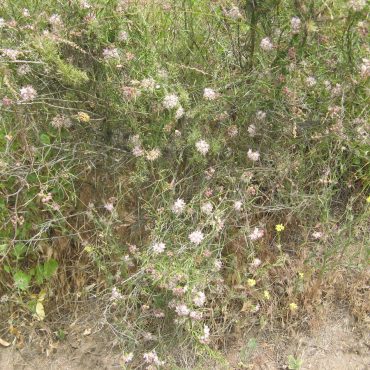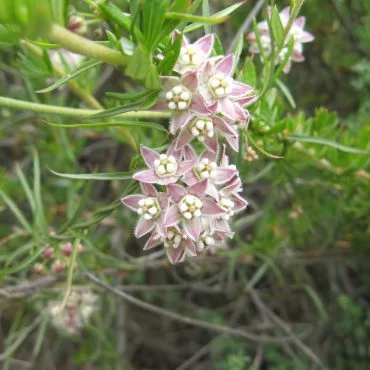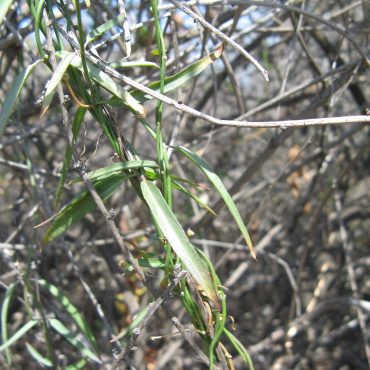Climbing milkweed is an evergreen perennial vine with wiry green stems that reach 6 feet (2 m) in length and twine around the stems of support plants. Cut plants bleed a milky sap. Medium green leaves are opposite, narrowly linear with pointed tips and obtuse or truncated bases; the literature reports ovate leaves as well. Leaf margins are smooth and the leaves often fold up along the mid-rib. There are sparse hairs on the leaf underside.
Several flowers are born in a rounded cluster on a peduncle arising from a leaf base. The inconspicuous calyx below each flower is green and five-parted. Five petals are fused at the base into a symmetrical corolla with five mauve colored lobes that spread outward and upward. The corolla margins are often pale and fringed with fine hairs. A ring of pale tissue circles the inside of the corolla base. There are two ovaries; their styles are free but their stigmas are fused into one large structure. Unlike most flowers, only five areas of the fused stigma are receptive to pollen; these “stigmatic chambers” are located below the surface, each accessed by a vertical slit. Five stamens form a column around the pistil with the anthers fused to the stigma. There is a stigmatic chamber between each pair of anthers. Milkweeds, like orchids, do not shed pollen grains individually, but in discrete packets (pollinia) each carrying hundreds of pollen grains. Each anther produces two pollinia.
Stamens and pistils are obscured by elaborate appendages arising from the filament column, which enclose the stamens and act as reservoirs for copious amounts of nectar. In climbing milkweed, these appendages are semi-spherical white “hoods”. Additional small pale appendages arise from the anthers and are appressed to the stigma; each has a purple-tinged V shaped slit opening outward. These appendages decorate the edge of the stigma like the corona of a small sun. The main bloom period is April – July, but July rain in 2015 extended the bloom through August.
When a flower is fertilized, one of the two ovaries develops into an erect, elliptical or tear-drop shaped fruit, 2-4 inches (5-10 cm)long; when dry, the fruit splits longitudinally releasing seeds. Seeds are flattened ovals, less than 1/4 inch (5.3 mm) in length, attached to a tuft of long, silky hairs that aid dispersal in the wind. Fruit set of milkweeds is typically very low (1-5 %).193 We have not found fruits in the Reserve; so far, the sole fruit was on a vine in nearby Manchester Preserve.



